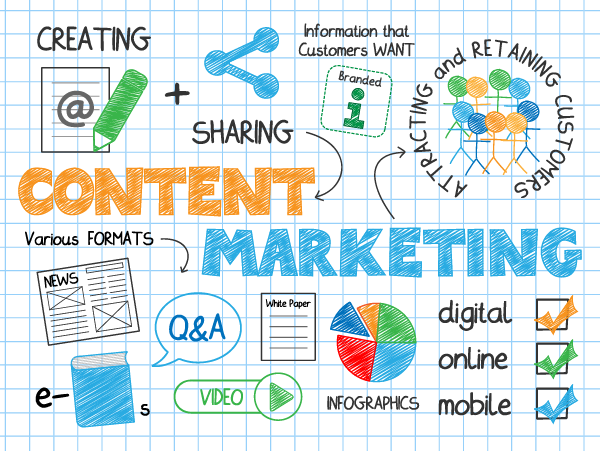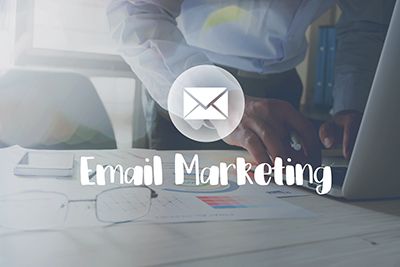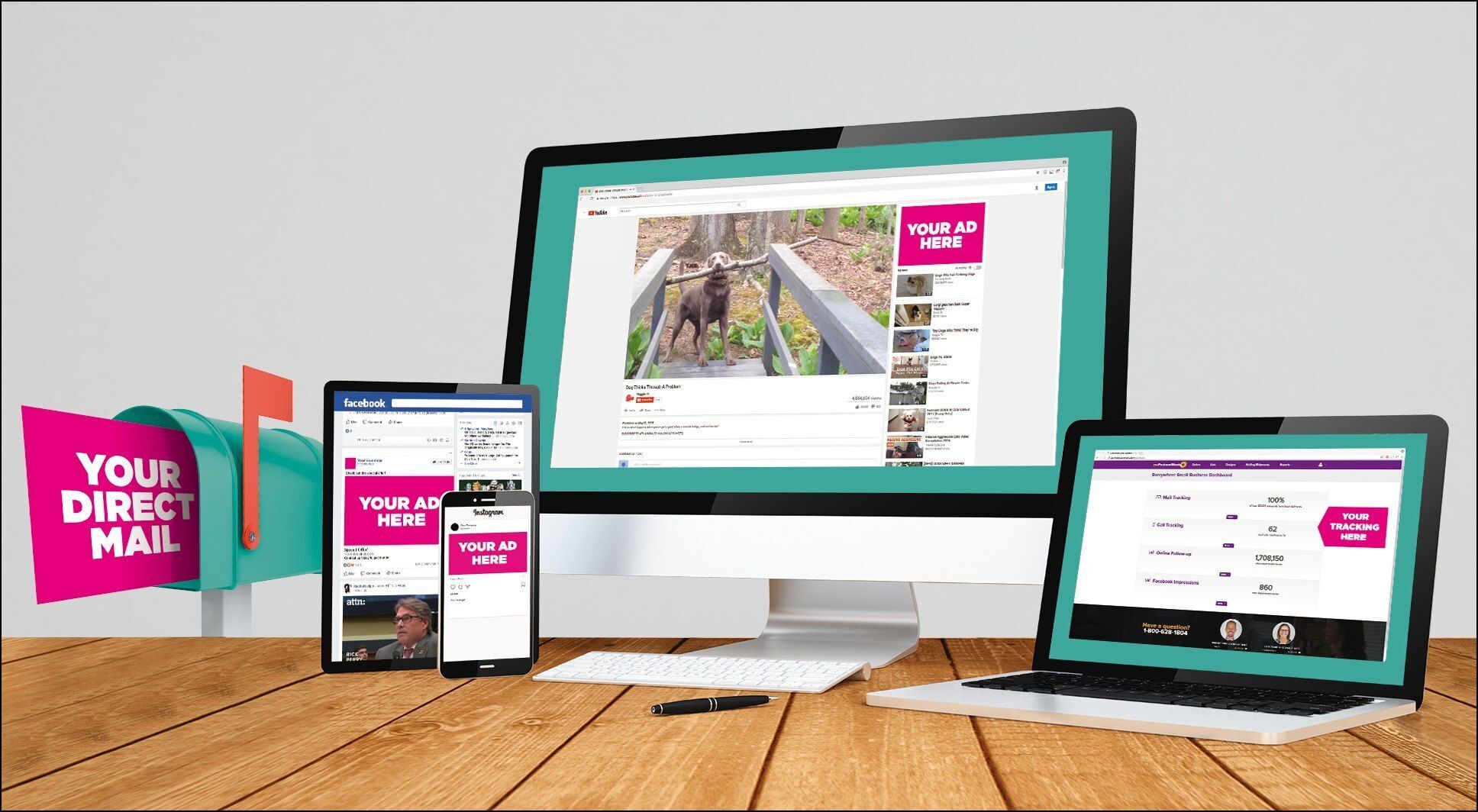How Marketing is Changing in This "New Normal"
As the U.S. economy gradually begins to reopen, you may want your marketing strategy to look different than it has in the past. Why? Because the market is in flux, and consumers are re-evaluating existing brand relationships. A new study from Influence Central outlines just how impactful some of these changes are. Here are three of those changes and what they mean for you.
1. Customer loyalty is in flux. According to the survey, 75% of consumers are unable to find many of their regular products in stores. Nearly half (45%) are unable to find their regular products online. As a result, they are open to new brands they might not have been in the past.
What this means for you: There has never been a better time to introduce yourself to a new group of potential customers. Think about launching a prospecting campaign to grab those buyers before your competitor does.
2. Known brands must prove value. Customers are open to change, but they are sensitive to price, too. Only 12% of consumers say they are “very willing” to pay for a preferred brand over a generic label, and 52% are “somewhat” willing to do so. More than one-third (37%) favor generic brands for their cost savings.
What this means for you: Known brands need to clearly articulate their value proposition more than ever. Use your direct mail, email, and mobile communications to communicate why your products and service are worth paying for.
3. Customer habits are changing. Consumers are changing the way they live. They are ordering out more, supporting small, local businesses more, and bringing more lifestyle elements in-house (For example, 56% of consumers are brewing more coffee at home than they used to.) Some of these trends will stay long after the pandemic is over.
What this means for you: Understand how your customers’ habits are changing and how you should adapt your marketing strategies to address them. You may still use the same mix of channels you have in the past. You may just need to position your messaging differently to reflect new consumer habits and sensitivities.
Need help? Let’s talk strategy!
Getting Content Marketing Right

We hear a lot about content marketing these days. Why is it so important? Whether it’s in print, email, or mobile, content marketing builds customer trust, engagement, and loyalty, which are the foundations of long-term revenues and growth. Here are five steps to getting it right.
1. Have a brand message.
Boil your brand messaging down into a simple statement that reflects both your product and your value proposition. Some well-known examples are McDonald’s “I’m lovin’ it” and Nike’s “Just do it.” Having an over-arching brand message helps you maintain consistency and focus in your broader print and digital marketing efforts.
2. Use metrics to gauge results.
How you incorporate content marketing into an overall marketing strategy will depend on what you want to achieve. Use metrics to further specific marketing goals, including:
- Sales volume
- Market share
- Number of leads
- Cost per lead
- Length of sales cycle
Put numbers to these goals and time frames to achieve them.
3. Speak your audience’s language.
You will speak differently to moms raising children than you will to twenty-somethings just starting their first job. Have detailed knowledge of who your audience is and what makes them tick. Craft your images and messaging to each segment.
4. Keep branding consistent.
All of your content should reflect consistent branding. Place someone in charge of managing your content strategy and set up guidelines for elements such as logos, brand colors, images, and fonts, styles, and sizes of text. Remember that all of your brand elements must work across multiple channels, including print, email, and mobile.
5. Target the stage of the sales funnel.
Not only can your customers be segmented into different target groups, but they are also at different stages along their buying journeys. For example, someone who needs your product but isn’t yet aware of your brand isn’t ready to skip right to product selection and pricing. Know where customers are along the journey and craft the right message to hit them at the right time.
Sound complicated? It doesn’t have to be, and you don’t need to go it alone. Give us a call!
3 Approaches to Measuring Results

When you invest in any marketing effort, you want to know if it’s working. There are many approaches to results measurement, and the right choice for any marketing campaign will depend on your marketing goals. For numerous marketers, response rates are the first measurement they use. But there are other measures that are more telling.
Let’s look at three of them.
- CPL (cost per lead). When you are developing a mail campaign, it’s easy to focus on the price per piece. It’s hard for personalized mailers to compete with high-volume static mail on a cost basis, but everything changes when you look at what your program costs per lead.
If you mail 100,000 postcards at $.25 each (including postage), that’s a project cost of $25,000. If that campaign achieves a 1% response rate, that’s 250 leads at the cost of $100 per lead. On the other hand, if you mail 25,000 personalized mailers at $1.00 each, that is still a project cost of $25,000. However, if you achieve a 12% response rate, that’s 3,000 leads. Now your cost per lead drops to $8.33!
- CPS (cost per sale). Not all leads translate into sales. To find out what it costs you to actually close a sale, divide the number of people who make a purchase into your total costs. If only 33% of respondents to the above campaign make a purchase, for example, your cost per sale is $300 for the static campaign, while for the personalized campaign, it is $25.00.
- LCV (lifetime customer value). The value of the sale often goes beyond the initial purchase. If personalized communications woo the buyer of one automaker to another, and if that customer becomes loyal to that brand, the return on investment from that mailing piece includes the value of every car purchased by that customer over his or her lifetime. This is an important metric for marketers of long-term purchases, such as automobiles, financial products, and insurance.
The bottom line? Before you measure your results in any print campaign, make sure you understand all of the available measuring sticks, then use the one(s) that are the most meaningful to you.
Want More Donations? Choose Print!

For nonprofits, every dollar they spend on overhead, administration, and marketing is a dollar not spent on their mission. Not surprisingly, there is an intense focus on which marketing channels are most effective. So which channel works best for nonprofits? A study by YouGov provides the answer: direct mail. In a survey of more than 1,150 U.S adults, YouGov found the following:
-
One-fifth (21%) of respondents said that a direct mail solicitation prompted them to make their most recent donation. This is higher than for any other channel.
-
Older donors (55+) are most likely to respond to direct mail. One-quarter made their last gift in response to a mailing. Among 18-34-year-olds, this drops to 14%.
-
Lower-income households are among the most motivated by direct mail. Nearly one-third of those earning $40,000 per year or less responded to direct mail for their last donation. Among those earning $80,000+ per year, this drops to 18%.
-
Only 12% of donors report being prompted to make their last gift by something they heard about on the radio, on TV, or in print.
-
Even fewer (10%) were prompted by email.
-
Very few donors (6%) were prompted by social media, such as Facebook or Twitter, although this is stronger among 18-34-year-olds (11%).
When it comes to fundraising, direct mail is the clear winner for nonprofits. So once you have decided to launch a direct mail campaign, what is the next step? Make it the best it can be. Why not give us a call?
3 Tips for Better Email Marketing

Want to improve your email marketing for 2018? Here are three tips you want to keep in mind.
- Know (we mean really know) your audience.
We’re not just talking about knowing what they buy. We’re talking about how they like you to communicate. For example, younger audiences don’t like the hard sell. It’s important to communicate your value, but the hard sell will turn them off. Younger audiences also tend to be more responsive to user-generated images than to professional photo shoots. They also tend to be more responsive to peer comments and reviews than to company-generated content. - Create campaign-specific landing pages.
When your audience clicks through the email, don’t send them to your main website. Send them to a landing page created specifically for that product, that campaign, and that promotion.
Ensure that the content on the landing page matches the content in the email. As your audience clicks through the email to the landing page, you want it to be a smooth, seamless transition. - Don’t, don’t forget the CTA.
Although many audiences don’t like the hard sell, they still need to understand what you want them to do. If you focus exclusively on content, they may simply see your email as an information campaign. Include a clear call to action so they know the end goal — to purchase a product, sign up for a webinar, or come to your event.
There is lots of content out there being used for branding purposes. If you are selling something, make sure your promotions aren’t confused as being among them.
Need help getting your email messaging out there? Let us help you integrate your direct mail, email, and other multichannel content in an integrated, effective campaign.
The Empowerment of Personalization

Every now and then, data points jump out at you. Here are two data points about personalization that jumped out at us recently:
- 35% of Amazon's revenue is generated by its recommendation engine.
- 75% of consumers are more likely to buy from a retailer that recognizes them by name, recommends options based on past purchases, or knows their purchase history. (Accenture)
We live in a world in which we have access to more information than ever. This can be both empowering and paralyzing. When consumers have too many choices, they can get overwhelmed and end up not choosing anything at all.
That’s why personalization is so important. Done right, it helps consumers navigate and simplify the maze of choices and take the stress out of making a decision. With personalization, brands are essentially saying, “We know you. We know what you like. Let’s make this easy.”
Personalized recommendations are just one way data-driven communications can be highly effective, however. Other types of personalization, such as triggered direct mail, demographically targeted email, and personalized cross-sells and upsells are highly effective, as well.
Are you tapping the power of personalization? Do you know what your customers like, when they buy, and what motivates them to buy? If not, you’re missing critical opportunities to connect with them and guide them into smart purchases—yours!
Need help? Give us a call.
Non-Profit Marketing
Do you know what really works in direct appeal fundraising? Need help figuring it all out? Click the link to schedule a free consultation.
Return on Investment Calculator
Measuring the success of any marketing campaign requires calculating the Return on Investment (ROI). Getting the most accurate measurement means being specific to your business and who you're trying to reach. That's where we come in. Our ROI Calculator can be customized specifically for your business. Call us today to learn how or click on the link to request your FREE demonstration.
Marketing Services Suite
Need a focused, consistent marketing plan? Have a marketing plan but just need help implementing it?
Wordsprint now offers a Marketing Services Suite which lets you build a customized marketing program to fit your budget. Choose a complete marketing solution or just the services you need, all for one low monthly fee.
Hot Off The Press
In today’s marketing landscape, content marketing is indispensable. With a few adjustments to your strategy, you can effectively direct your direct mail, email, and social media efforts to reach the right audience at the right moment, significantly enhancing your marketing initiatives.
When designing your next print project, achieving the best results requires attention to detail and understanding how to prepare your designs for print. Whether you're working on a business card, a brochure, or a poster, following these nine tips will help ensure that your print project turns out its best.
Nowadays, everyone wants to stretch their marketing dollars, but we all want the best results, too. The good news is, you can do both! Here are five tips for budget-conscious marketers that will save you money and boost your results simultaneously!
Marketers intuitively understand what surveys have told us for years: Direct mail ROI rises dramatically when direct mail is part of an integrated, multichannel marketing strategy.
One way to make a strong impression with printed material is by incorporating embellishments like specialized coatings, textured finishes, and custom die cuts. While these enhancements are not new, many businesses are unaware that they are both accessible and affordable, whether you are printing offset or digital.
Local Real Estate Guides Online!















